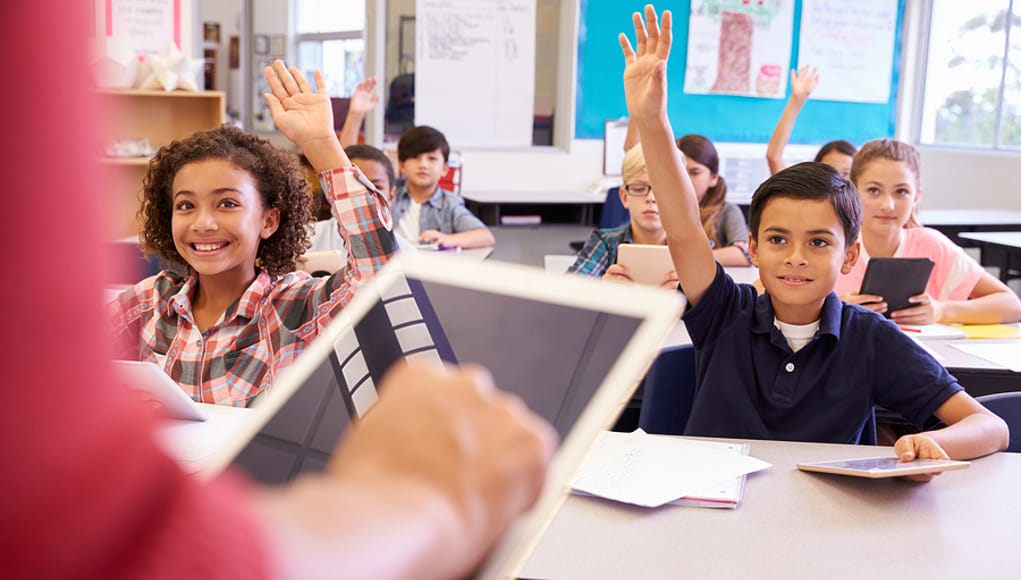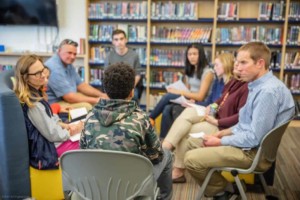How to Get Classroom Culture Right

By Gerard Dawson
“Classroom culture” is one of those vague terms that can send shivers down a teacher’s spine. One mention by an administrator or thought leader, and it’s easy for your eyes to glaze over and your ears to shut. But the truth is, improving classroom culture consists of concrete steps that teachers can take to ensure a better learning environment for their students. While the results may not be easy to collect data about, they can certainly be felt. Here are some of the first steps I recommend.
Make Sure Every Voice is Heard
Classroom culture is largely about the way that teachers and students communicate and the way that students communicate with each other. In both cases, culture cannot be optimized until all students are participating in discussions and sharing their voices. If some students feel silenced, then they will not contribute and miss out on valuable learning experiences. When certain students feel uncomfortable speaking, class can become stale and boring, since teachers and students know that only a few voices will do all the talking.
When all students’ voices are consistently heard in the classroom, then teachers have the chance to push students in their speaking abilities, even using tools like cold calling to maximize participation and formatively assess the class. Seventeen-year veteran teacher Stacey Ryan acknowledges the connection between hearing every voice and assessing student abilities in her piece, “3 Tech Tools that Inspire Collaboration.” She writes, “By capturing students’ learning in a small-group setting and without the teacher at their side, I am able to hear my students think aloud and readily verbalize what they know.” Stacey uses small audio devices offered by Lightspeed, which allow her to listen in on students’ small-group discussions.
Effective communication is a theme in my next point, too:
Create a Clear Communication Line With Parents
It’s easy to fall into the day-to-day rhythm of the school year and forget that students have lives outside of the hours we spend with them each week. Opening up a solid line of communication with parents allows teachers to see a fuller picture of students’ personalities and behavior in the classroom. It can help to prevent issues before they ever arise, and it can help teachers feel more comfortable bringing other stakeholders, like counselors and administrators, into conversations when more help is needed.
The idea of opening up lines of communication with parents probably brings to mind the dreaded “phone call home” that teachers make when a student is misbehaving or under-performing. Of course, teachers still need to address students’ challenges with parents, but now there are many options available to encourage a more positive cycle of conversation between parents and teachers. Many schools are adopting tools like Bloomz to help facilitate rich dialogue between schools and home. The great part about school-to-home communication apps is that they go well beyond the simple one-way messaging. Parents can receive messages in their preferred language and get updates about school events on a calendar. These tools can make parent-teacher communication richer and more ongoing, which can actually make teachers’ jobs easier, if the communication can lead to better parent support for students’ needs at home.
Integrate Social and Emotional Learning Programs
Imagine a classroom where students are showing up every day to do hard work, and a classroom where all students know that learning is the shared mission of the classroom. Integrating social and emotional learning (SEL) programs can help make this a reality.
Encouraging grit, self-monitoring, collaboration, and other positive social and emotional skills has an exponential effect on all other activities that happen in the classroom. Transitions are smoother. Student performance is better. Collaboration is kinder and more effective. Discussions are richer. The curriculum becomes more interesting to students because they are invested with their classmates in learning it. SEL programs are a huge lever that, when used correctly, can have a massive impact on all other aspects of a classroom. Although SEL is relatively new to the education conversation, programs like 7 Mindsets are making it easier for schools to get started, offering web-based multimedia lessons around social and emotional learning for elementary, middle, and high school students. Effectively including SEL is foundational for improving classroom culture at scale in a school or district.
Offer Authentic Learning Experiences
When students get the feeling that they must “play school” by earning points and passing arbitrary assessments in a class, classroom management issues are more likely to arise. If worksheets, anthologies, and irrelevant curricular materials are the norm, than both the students and the teachers will be bored. This is a toxic force in classroom culture. Boredom breeds other problems.
One way to avoid these pitfalls is to integrate authentic learning experiences. Have students solve math problems that are applicable to real work situations, and show students the implications of the problems they are solving. Teachers can reflect on questions like:
- How might students’ motivation to learn math be improved if they are learning about earning and losing money in the stock market?
- How might students’ motivation to write better increase if they are writing a piece that will be published in a school or local publication, or shared on a class blog?
- How might students’ interest in history increase if they interviewed somebody who was actually involved in an event, as opposed to simply reading about a topic in a textbook?
The recent emphasis on STEM in education allows for many opportunities for teachers to integrate more authentic learning experiences into their classrooms. Consider projects like this one, provided by Defined STEM, during which students learned about renewable energy by designing a sustainable restaurant for a specific region of the United States. Projects like this involve multiple content areas with entrepreneurship to engage students in learning that has clear applications to life outside the classroom.
Facilitate Successful Collaboration
Because so much of classroom culture involves communication, teaching the essentials of successful collaboration is essential. But problems can often arise. Students may “shirk” on their work and leave their partner to do everything. Students may dominate activities by doing more than their fair share. Students may fail to compromise and start arguments with group members. Students may talk over each other in discussions, discouraging quiet students from sharing their thoughts and ruining the serendipity possible in quality class discussions.
One simple shift that teachers can make when it comes to facilitating successful collaboration is to use model teaching. Even if it seems silly, teachers should deliberately demonstrate whatever collaborative situation is going to happen in class that day. For example, if students are working on a group research project, then the teacher should model talking with two students about how to divide responsibilities and ensure that everyone is doing their fair share, as well as checking in at set points to ensure that everyone is on track and deciding on a process for what to do if conflicts arise. New tools like Project Pals can also help teachers monitor individual contributions to group projects and chat with teams digitally while work is happening.
It can feel overwhelming to address classroom culture because it feels nebulous. The good thing, though, is that the factors that contribute to culture are interrelated. Start with one item on the list above, and watch as you are encouraged to address others, further improving your classroom’s culture and the quality of your students’ experience in your class.
For more, see:
- Getting Classroom Culture Right with Practical SEL
- Letting Students Lead School Culture
- 3 Innovative Tips For Tackling School Culture
Gerard Dawson is an English teacher at Hightstown (NJ) High School, the author of Hacking Literacy: 5 Ways to Turn Any Classroom into a Culture of Readers, and a contributor to The Best Lesson Series: Literature. Follow him on Twitter: @GerardDawson3
Stay in-the-know with all things edtech and innovations in learning by signing up to receive our weekly newsletter, Smart Update.







0 Comments
Leave a Comment
Your email address will not be published. All fields are required.